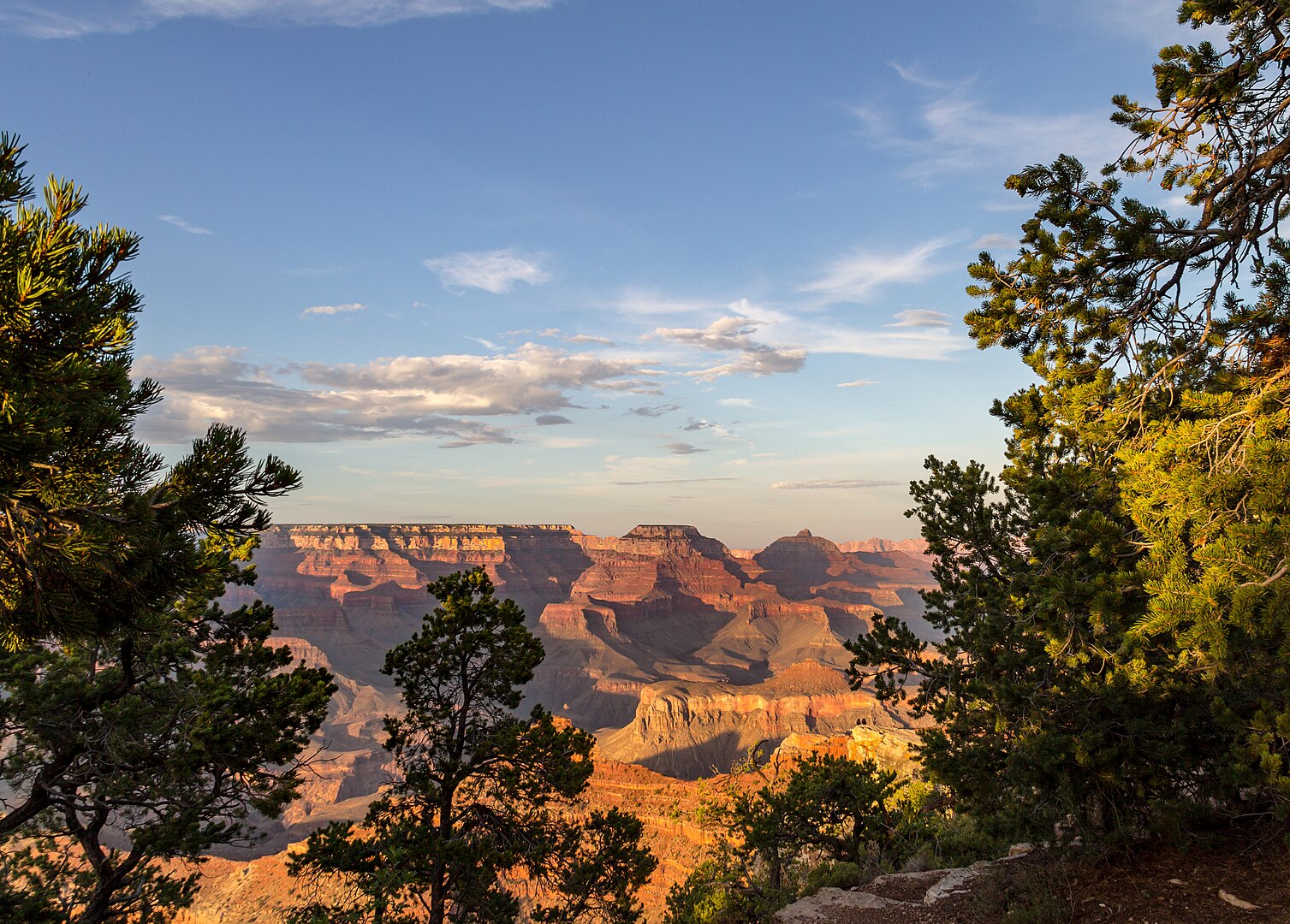America’s national parks offer some of the most breathtaking landscapes on earth, and there’s no better way to experience their majesty than from the comfort of your vehicle. These iconic roadways wind through mountains, skirt alongside pristine lakes, and traverse vast deserts, providing access to natural wonders that might otherwise remain unseen. Whether you’re planning a dedicated road trip or simply looking to add a scenic detour to your next vacation, these park drives showcase nature’s grandeur through your windshield while still allowing for plenty of opportunities to stop, explore, and create lasting memories. From the misty mountains of the Appalachians to the rugged coastlines of the Pacific, these scenic drives represent the perfect blend of accessibility and wilderness immersion.
Going-to-the-Sun Road, Glacier National Park
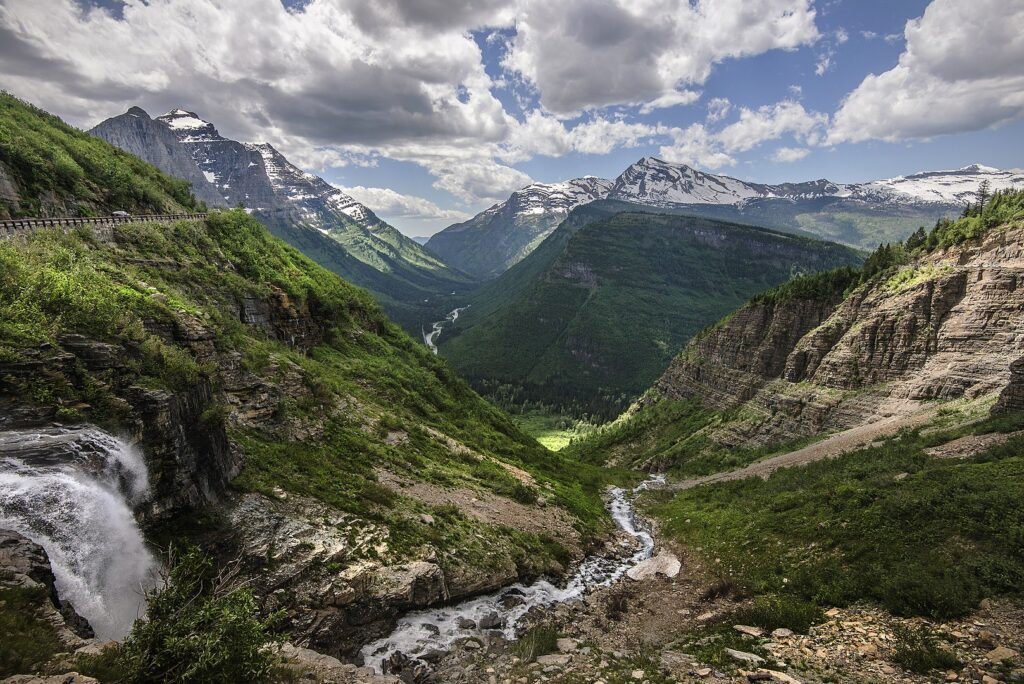
Perhaps the most celebrated park drive in America, Glacier National Park’s Going-to-the-Sun Road is an engineering marvel that traverses the Continental Divide through Montana’s spectacular mountain scenery. This 50-mile route climbs to an elevation of 6,646 feet at Logan Pass, offering visitors breathtaking vantage points of glacier-carved valleys, alpine meadows bursting with wildflowers, and distant peaks that retain snow even in summer.
The road hugs mountainsides so closely that oversized vehicles are prohibited, adding to the intimate experience of navigating through this pristine wilderness. Visitors regularly spot mountain goats, bighorn sheep, and occasionally bears along the roadside, making wildlife viewing another highlight of this incredible journey.
Trail Ridge Road, Rocky Mountain National Park
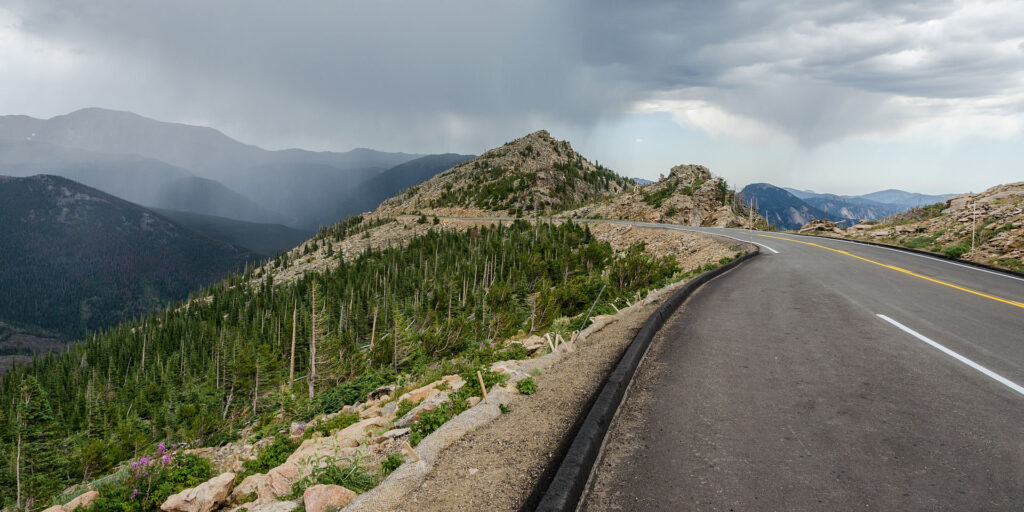
Known as the “Highway to the Sky,” Trail Ridge Road in Colorado’s Rocky Mountain National Park holds the distinction of being the highest continuous paved road in the United States. Reaching elevations over 12,000 feet, this 48-mile route provides travelers with expansive alpine views and the rare opportunity to drive above the tree line in a landscape reminiscent of the Arctic tundra.
The road features numerous pullouts where visitors can safely stop to photograph the surrounding peaks or observe elk, marmots, and pikas in their natural habitat. The dramatic changes in ecosystem visible along this drive—from montane forests to subalpine woodlands to the treeless alpine tundra—offer a remarkable lesson in how elevation affects plant and animal life.
Tioga Road, Yosemite National Park
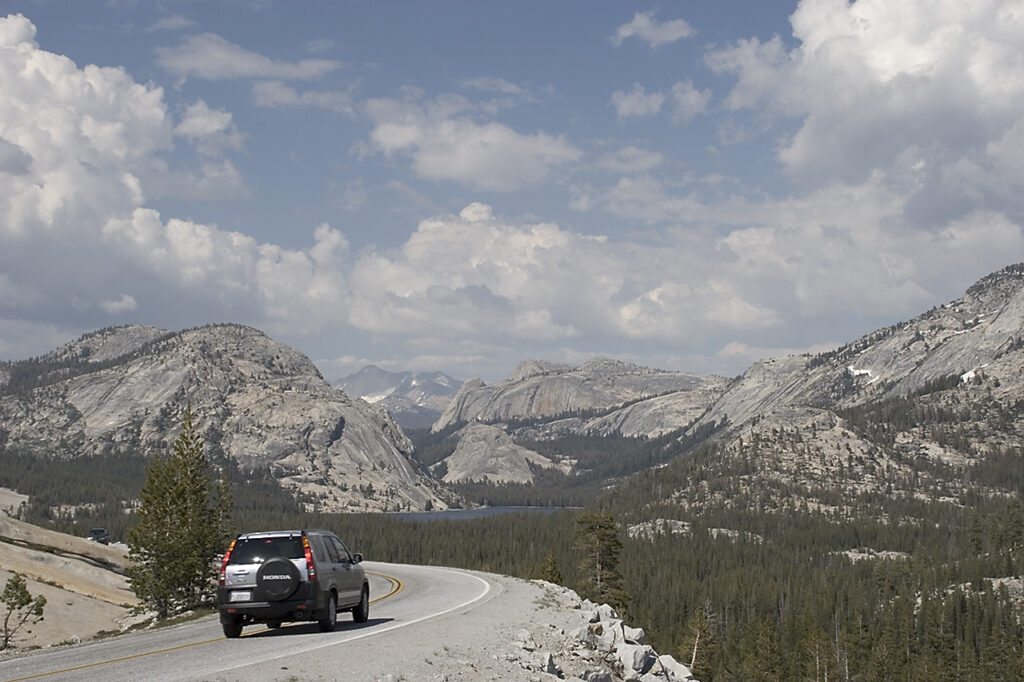
Traversing the high country of California’s Yosemite National Park, Tioga Road (Highway 120) provides access to a less-visited but equally stunning region of this famous park. The 39-mile scenic drive climbs from the western lowlands up to Tioga Pass at 9,945 feet, passing through lush meadows, past pristine alpine lakes, and offering views of granite domes that rival the park’s more famous landmarks.
Olmsted Point along this route offers one of the most spectacular vistas in the park, with Half Dome visible in the distance from a completely different perspective than the valley floor. Because of its elevation, Tioga Road is typically only open from late May through October, making it a seasonal treasure that showcases Yosemite’s diversity beyond its iconic valley.
Park Loop Road, Acadia National Park
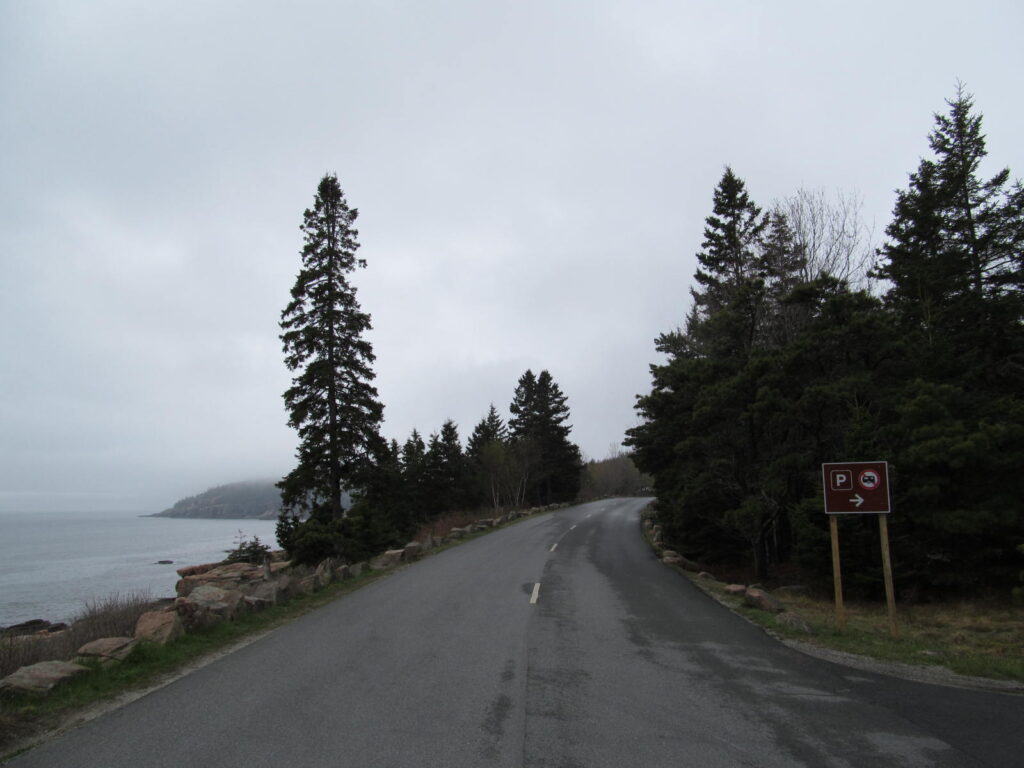
Maine’s Acadia National Park features the 27-mile Park Loop Road, which provides access to the diverse landscapes of this coastal gem. The route showcases the dynamic meeting of land and sea along the rugged Atlantic coastline, where waves crash against pink granite shorelines beneath towering evergreen forests. Highlights include stops at Thunder Hole, where incoming tides create resonant booms as water forces air out of a natural sea cave, and the summit of Cadillac Mountain, the highest point on the North Atlantic seaboard.
In autumn, this drive becomes even more spectacular as the deciduous trees erupt in fiery colors, creating a stunning contrast with the deep blue ocean waters. The road’s thoughtful design, completed in the 1920s, exemplifies the park service’s commitment to making natural beauty accessible while minimizing environmental impact.
Skyline Drive, Shenandoah National Park
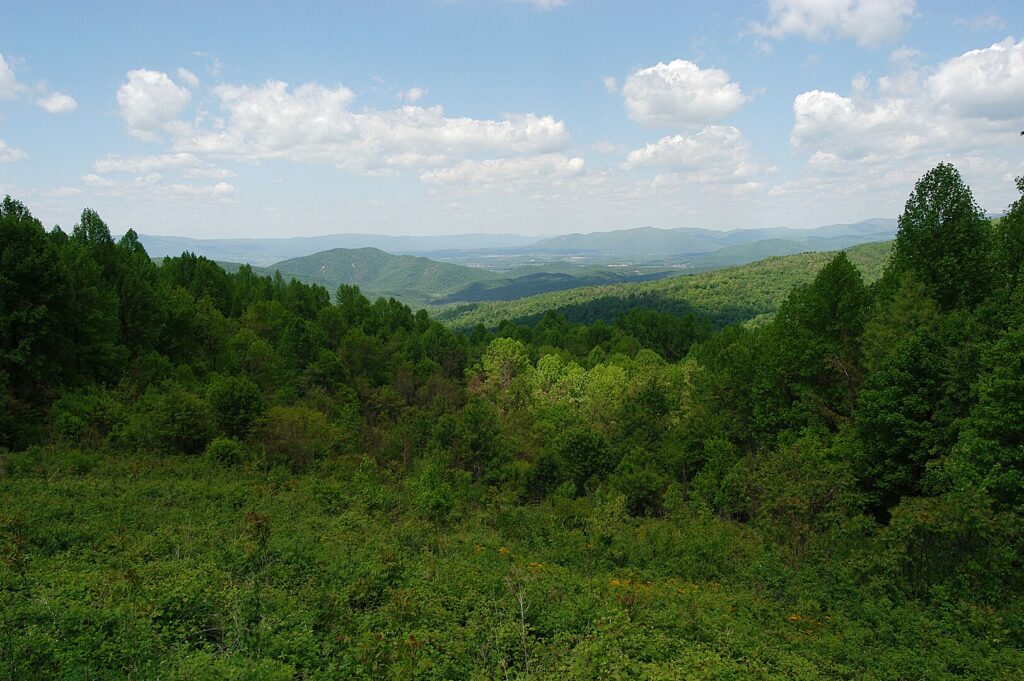
Winding along the crest of Virginia’s Blue Ridge Mountains, the 105-mile Skyline Drive forms the backbone of Shenandoah National Park and offers one of the East Coast’s most memorable driving experiences. The road features 75 scenic overlooks where travelers can pause to appreciate panoramic views of the Shenandoah Valley to the west and the rolling Virginia Piedmont to the east.
In spring, the roadside bursts with colorful wildflowers, while fall brings a spectacular display of autumn foliage that attracts visitors from around the world. The drive’s relatively gentle curves and moderate grades make it accessible to all types of vehicles, and its proximity to major population centers makes it one of the most visited park roads in the system. Wildlife enthusiasts particularly appreciate dawn and dusk drives, when white-tailed deer, black bears, and wild turkeys are most commonly spotted near the roadway.
Blue Ridge Parkway, Great Smoky Mountains National Park
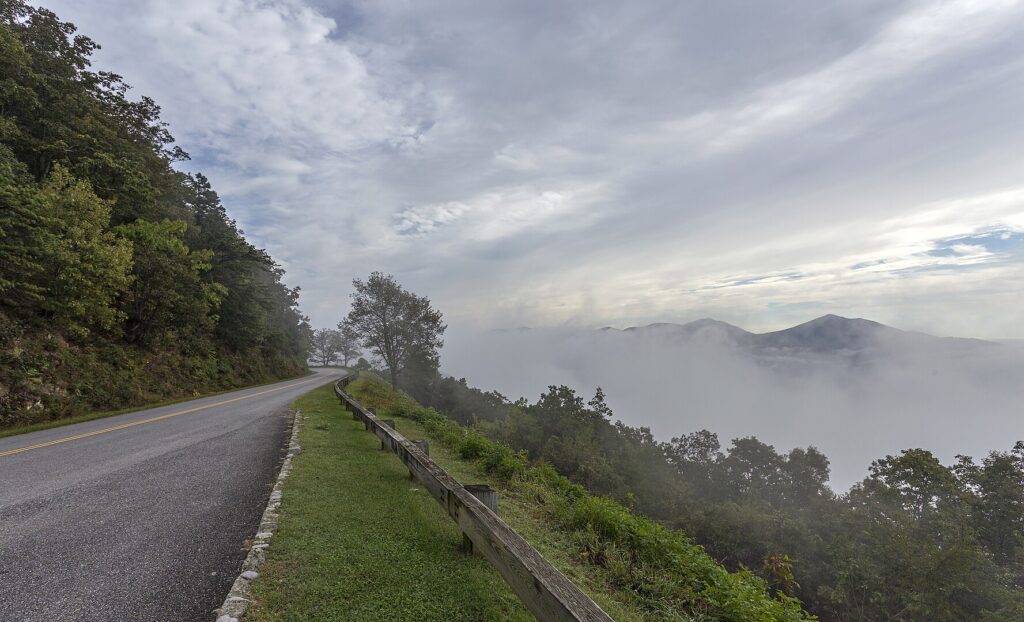
Although not entirely within park boundaries, the Blue Ridge Parkway connects Shenandoah National Park to Great Smoky Mountains National Park across 469 miles of stunning Appalachian landscapes. This remarkable “drive park” was designed specifically for leisurely travel, with commercial traffic prohibited and a lower speed limit that encourages appreciation of the surrounding beauty. The parkway’s southern section traverses some of the highest peaks in the eastern United States, with elevations reaching over 6,000 feet at Richland Balsam.
Architectural elements along the route, including stone bridges and tunnels, were designed to complement the natural surroundings, creating a harmonious relationship between the roadway and the landscape. The parkway’s careful preservation of both natural and cultural heritage makes it a drive through history as well as scenery, with preserved historical structures and interpretive sites highlighting the region’s unique mountain culture.
Desert View Drive, Grand Canyon National Park
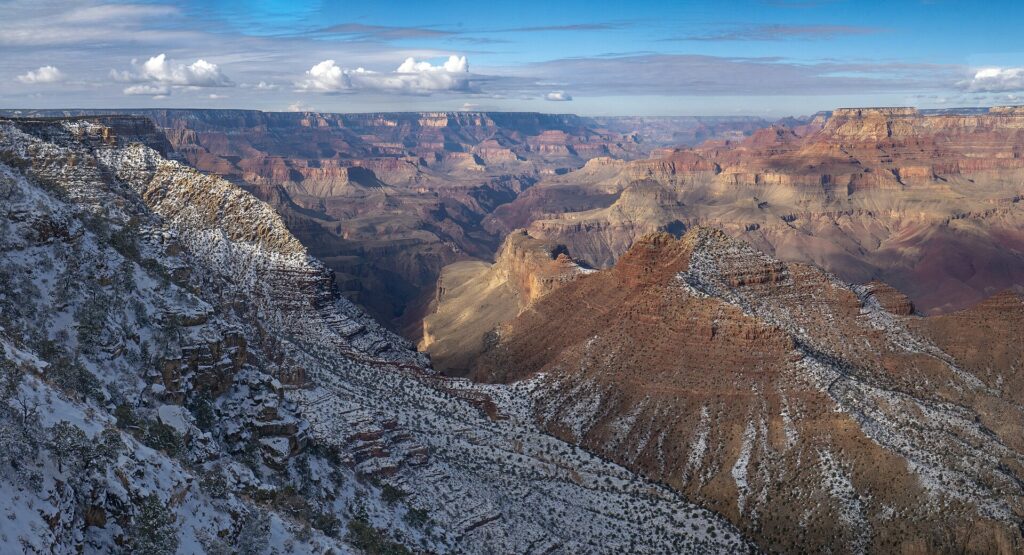
The South Rim of Arizona’s Grand Canyon offers several scenic drives, but the 25-mile Desert View Drive provides some of the most varied and spectacular vistas of this natural wonder. Beginning near Grand Canyon Village, this route follows the canyon rim eastward, offering access to numerous viewpoints that showcase different perspectives of the mile-deep chasm. The drive culminates at Desert View, where the historic Watchtower provides panoramic views of the eastern Grand Canyon, the Painted Desert, and the Echo Cliffs.
Unlike some park drives that wind through forests or mountains, Desert View Drive offers almost constant views of the canyon itself, creating an experience where the scale and complexity of this massive landscape gradually unfolds before travelers. The road’s relatively flat terrain makes it accessible year-round, although winter visitors should be prepared for occasional snow at this 7,000-foot elevation.
Badlands Loop Road, Badlands National Park
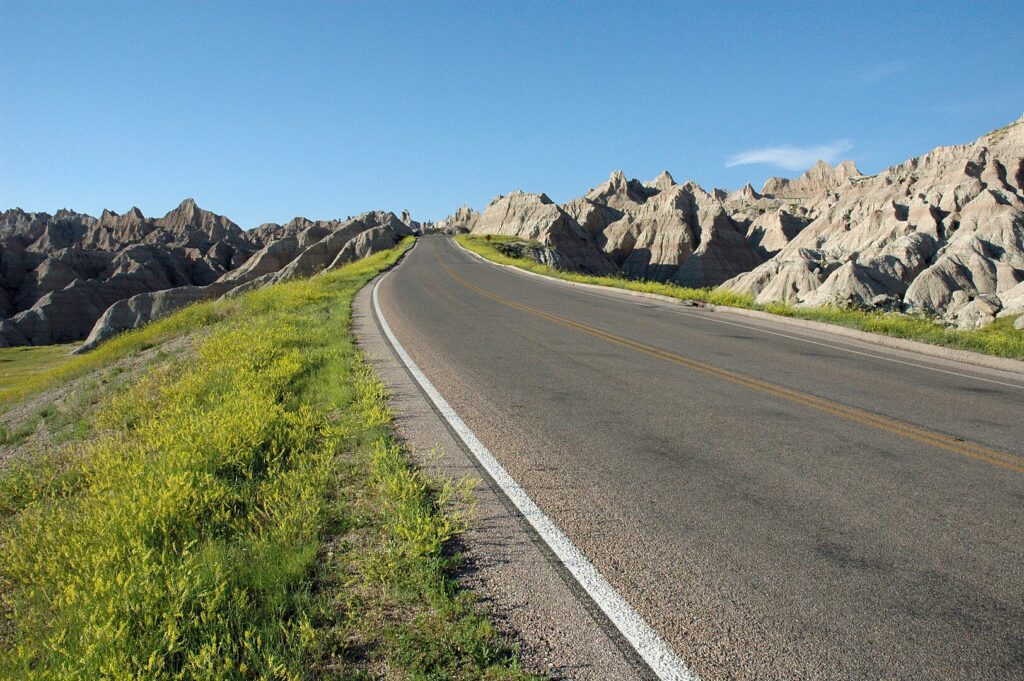
South Dakota’s Badlands Loop Road (Highway 240) traverses an otherworldly landscape of eroded buttes, pinnacles, and spires that creates one of America’s most unique driving experiences. This 31-mile route passes through the heart of the park’s dramatic formations, with numerous pullouts offering opportunities to safely observe the multicolored striped rock layers that record millions of years of geological history. The stark beauty of this seemingly barren landscape is accentuated by the surprising diversity of wildlife visible from the road, including bison, bighorn sheep, pronghorn antelope, and prairie dog colonies.
The road’s relatively open design, with few trees to obstruct views, creates a cinematic experience as the strange formations appear to shift and change with the angle of the sun throughout the day. Many visitors find dusk particularly magical, when the setting sun bathes the formations in golden light, accentuating their sculpted shapes and vivid colors.
Chain of Craters Road, Hawaii Volcanoes National Park
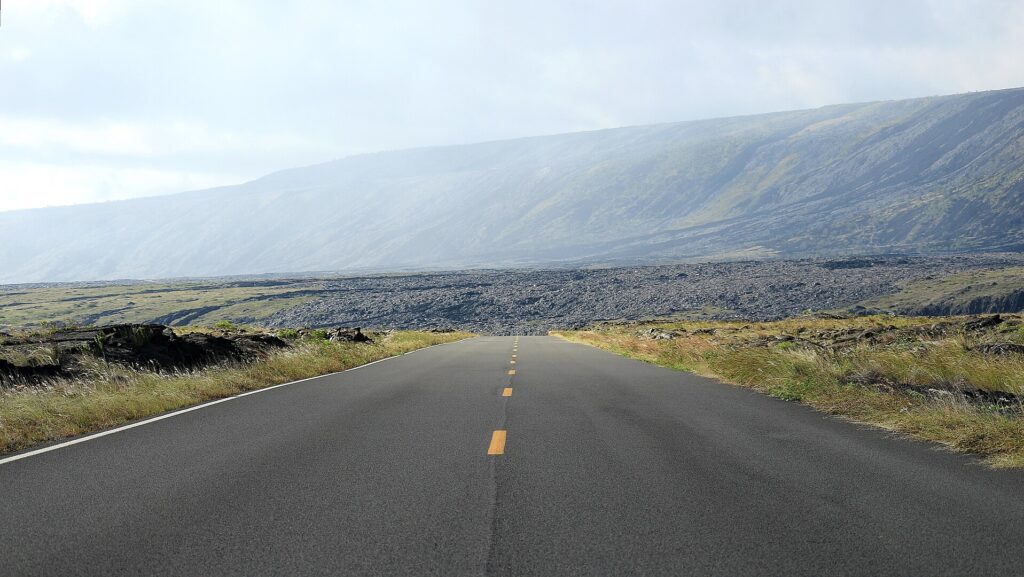
Hawaii Volcanoes National Park’s Chain of Craters Road offers one of the most dramatic drives in the national park system, descending 3,700 feet over 20 miles from the summit of Kīlauea to the Pacific Ocean. This remarkable route passes by several craters from past eruptions and traverses vast lava fields where molten rock has repeatedly buried the roadway during eruptions over the past decades. The drive provides a visceral understanding of the dynamic forces that continue to shape the Hawaiian Islands, with steam vents visible along sections of the route and the road itself occasionally closed due to ongoing volcanic activity.
At the road’s end, visitors can observe sea arches carved by powerful waves and ancient petroglyphs created by Native Hawaiians centuries ago. The stark contrast between the black lava fields and the blue Pacific creates a landscape unlike any other in America’s national parks.
Hurricane Ridge Road, Olympic National Park
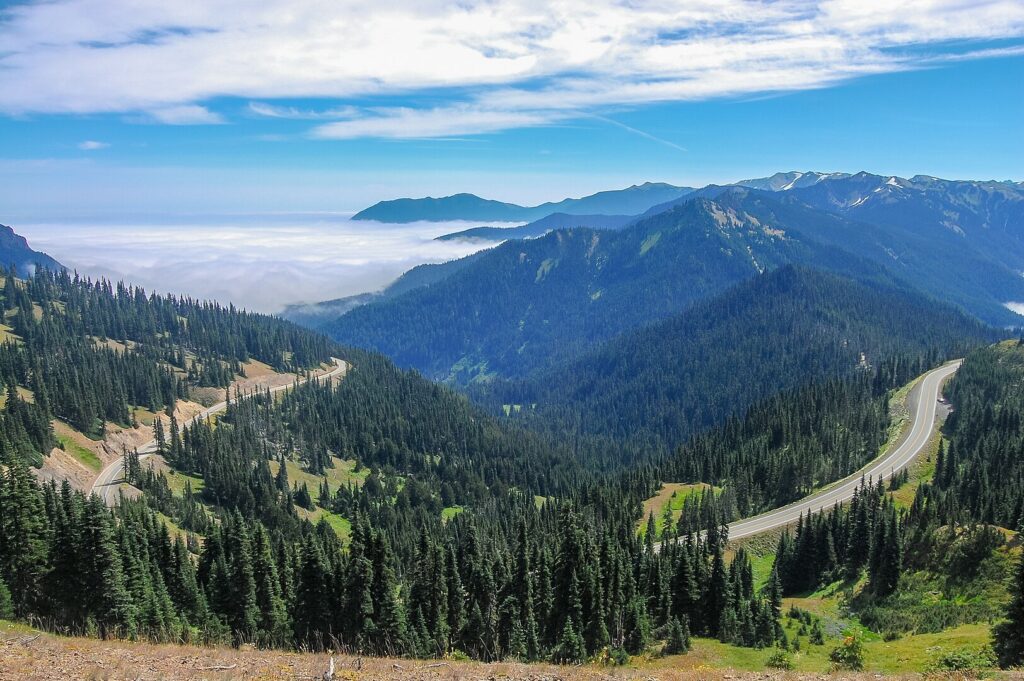
One of the few paved roads that penetrate the interior of Washington’s Olympic National Park, Hurricane Ridge Road climbs nearly a mile in elevation over its 17-mile length. Beginning in the temperate rainforest environment near Port Angeles, the drive ascends through dense forests before emerging into subalpine meadows with expansive views of the Olympic Mountains and, on clear days, across the Strait of Juan de Fuca to Vancouver Island.
During summer, the meadows along the upper portion of the road burst with colorful wildflower displays, while winter transforms the landscape into a popular destination for snowshoeing and skiing. The road takes its name from the fierce winds that can sweep across the exposed ridge, though visitors are more likely to experience calm, clear conditions that showcase the park’s remarkable diversity. Wildlife viewing opportunities abound, with blacktail deer commonly seen grazing near the roadside and occasional glimpses of more elusive mountain goats on distant slopes.
Kolob Canyons Road, Zion National Park
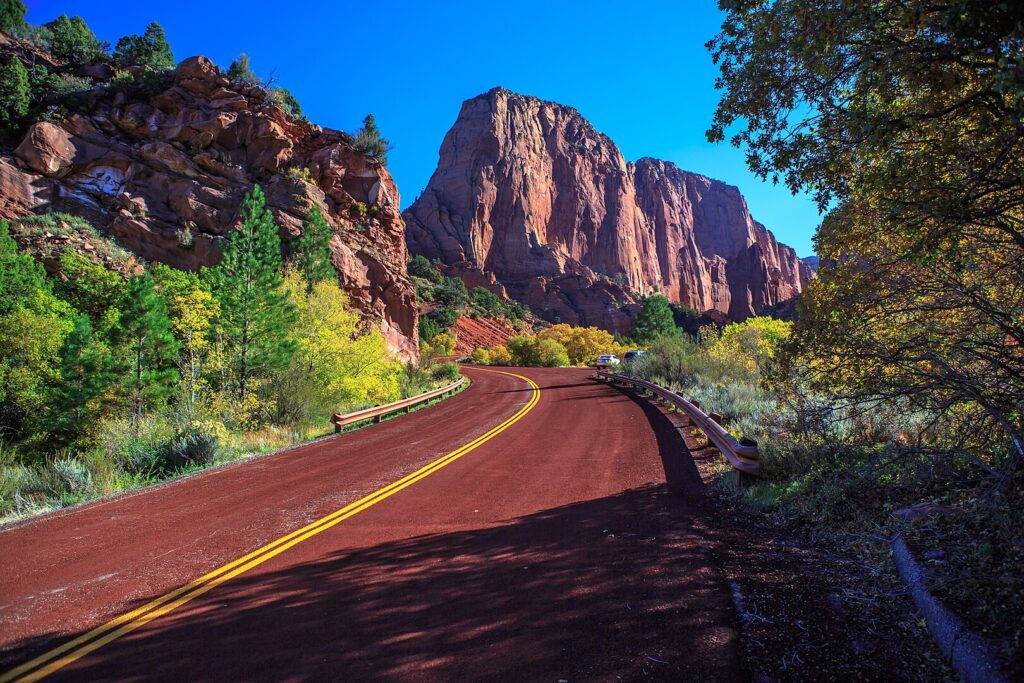
While most visitors to Utah’s Zion National Park focus on the main canyon, the 5-mile Kolob Canyons Road provides access to a less-visited but equally spectacular section of finger canyons and crimson cliffs. This short but sweet drive climbs steadily along the edge of the Colorado Plateau, offering increasingly dramatic views of parallel box canyons carved into the red Navajo sandstone. The route culminates at a viewpoint 1,000 feet above the starting point, where visitors can see across multiple canyons to the forested plateaus beyond.
The relatively uncrowded nature of this section makes it ideal for those seeking a more peaceful experience of Zion’s grandeur. Throughout the seasons, changing light conditions transform the appearance of the canyons, with the most dramatic effects occurring near sunset when the already red rocks seem to glow with inner fire.
Rim Drive, Crater Lake National Park
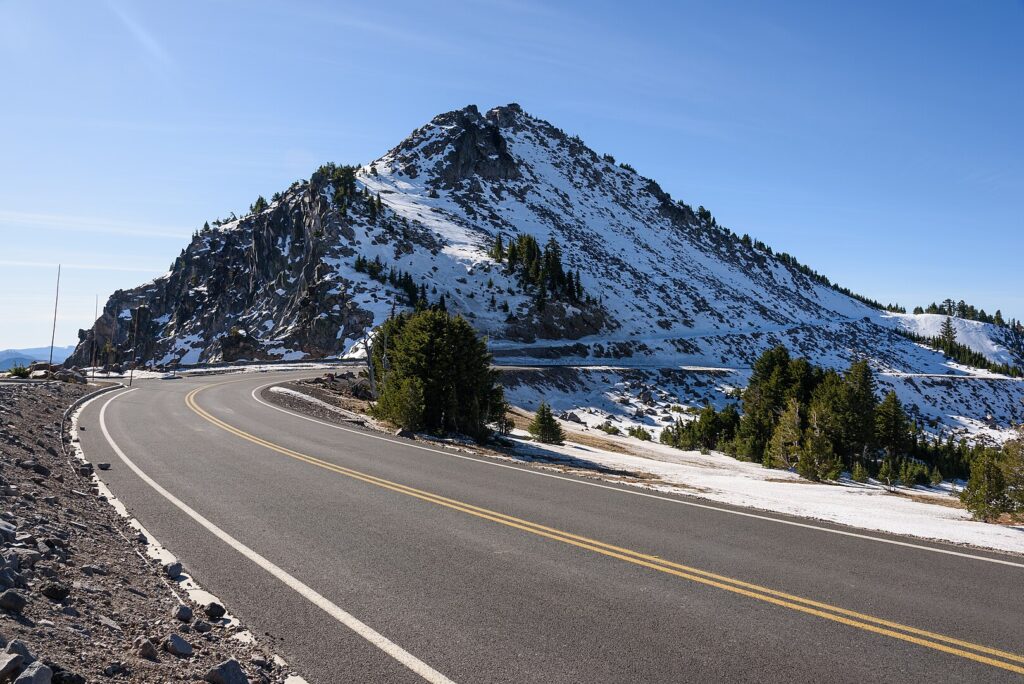
Circling the caldera of an ancient volcano that now contains America’s deepest and perhaps most pristine lake, the 33-mile Rim Drive in Oregon’s Crater Lake National Park offers constant views of this remarkable natural wonder. The road features over 30 pullouts that showcase different perspectives of the intensely blue lake and Wizard Island, the cinder cone that rises from its waters. Completed in 1941 after decades of construction, the drive reaches elevations over 7,900 feet and remains snow-covered for much of the year, typically opening fully only from July through October.
The engineering achievement of building this road along the rim of a collapsed volcano is particularly impressive considering the remote location and challenging terrain. Beyond views of the lake itself, Rim Drive offers vistas of the surrounding Cascade Range, including Mount Thielsen and Mount Scott, allowing visitors to appreciate the broader volcanic landscape that contains this sapphire jewel.
Tips for Enjoying Scenic National Park Drives
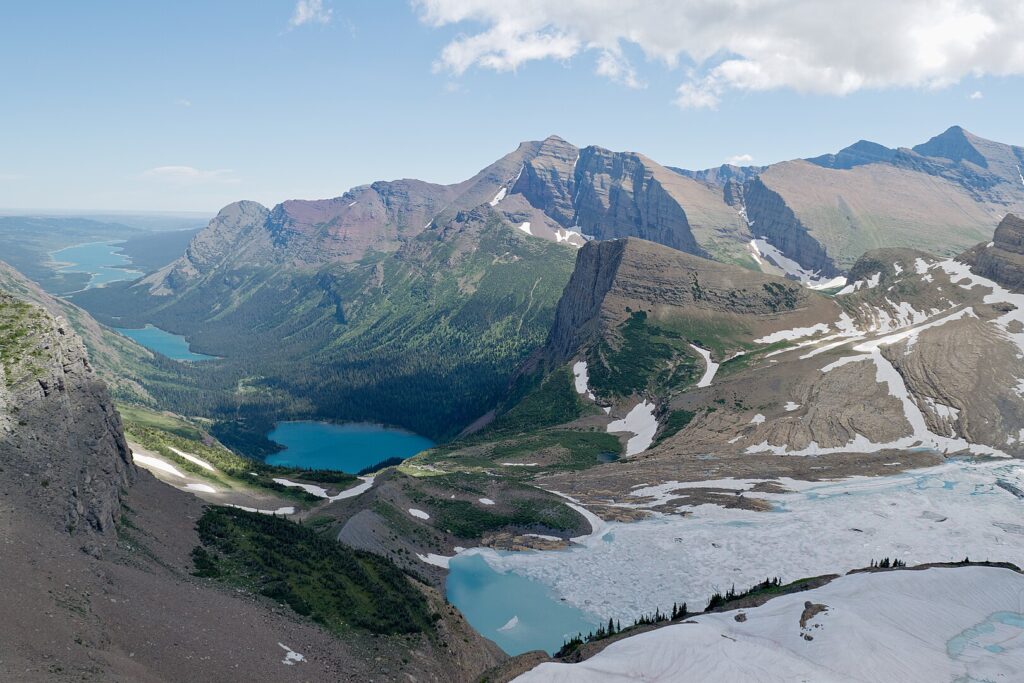
To maximize your experience on these iconic routes, consider timing your visit for the shoulder seasons (late spring or early fall) when crowds are thinner but weather conditions remain favorable for driving. Always check park websites for current road conditions, as weather closures are common at higher elevations and construction may affect accessibility during peak seasons. Build flexibility into your schedule to allow for spontaneous stops at viewpoints, short hikes from roadside trailheads, or wildlife viewing opportunities that might arise unexpectedly.
Consider experiencing your chosen drive at different times of day, as changing light conditions dramatically transform the appearance of landscapes, with early morning and late afternoon generally offering the most photogenic conditions. Finally, practice responsible tourism by staying on designated roads, properly disposing of waste, and maintaining a safe distance from wildlife—preserving these spectacular drives for future generations to enjoy.
Conclusion
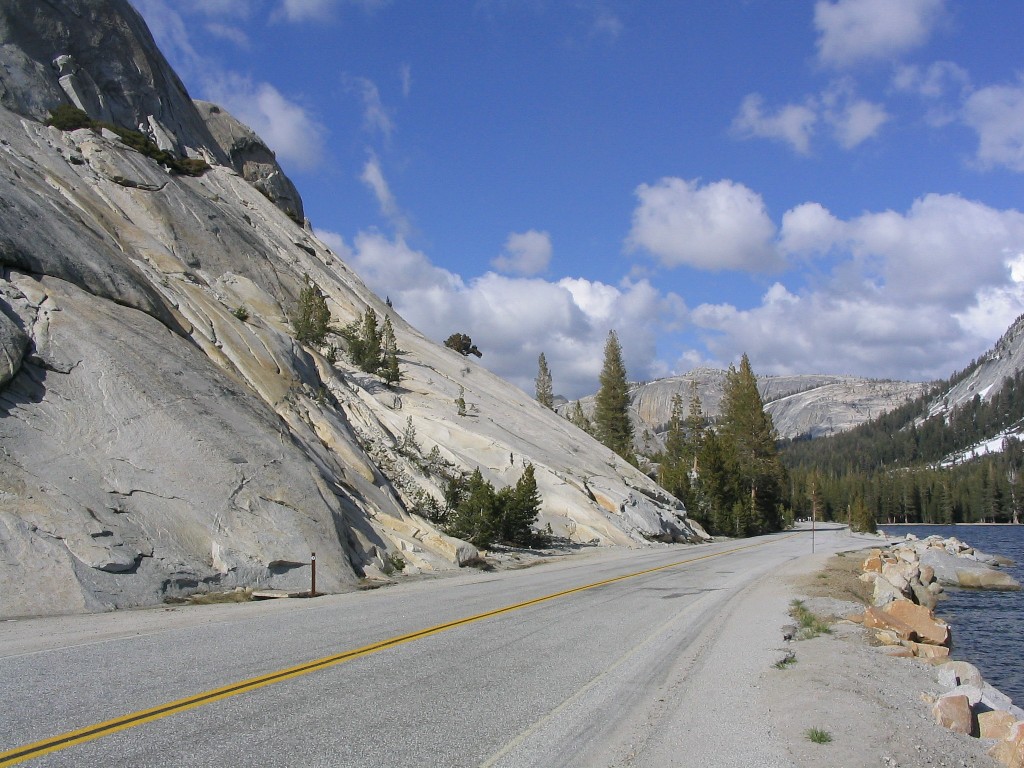
America’s scenic national park drives represent some of the most accessible ways to experience the diverse natural treasures preserved within our public lands. From alpine heights to coastal shores, these carefully engineered routes provide windows into landscapes that continue to inspire wonder and appreciation for the natural world. While photographs can capture moments of this beauty, there’s simply no substitute for experiencing these drives firsthand—feeling the change in air temperature as you climb in elevation, hearing the sounds of wildlife just beyond the roadside, and witnessing the subtle shifts in light that transform familiar scenes throughout the day.
Whether you’re a dedicated road-tripper or simply looking for the perfect way to experience America’s natural wonders, these scenic drives promise unforgettable journeys through our most precious landscapes.

